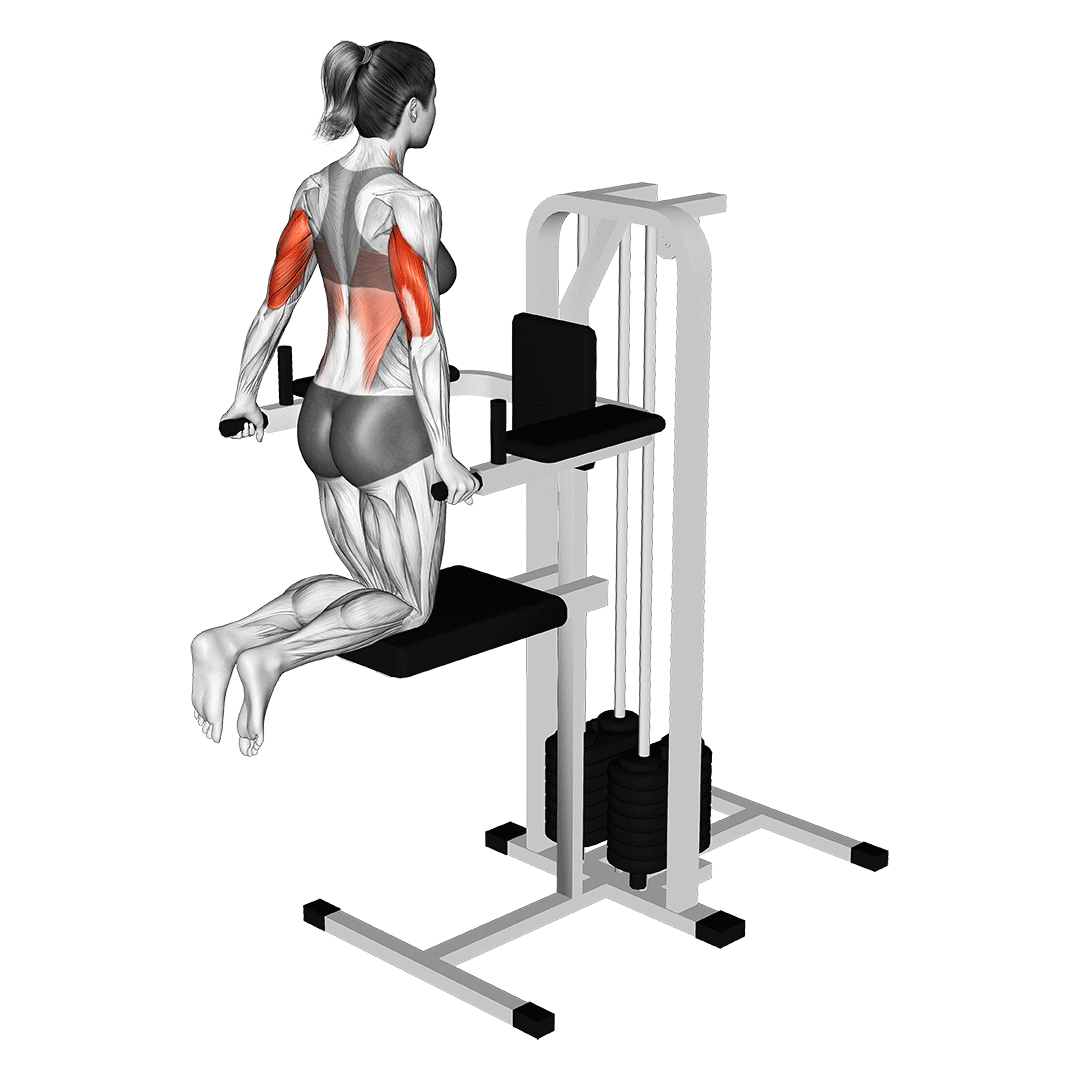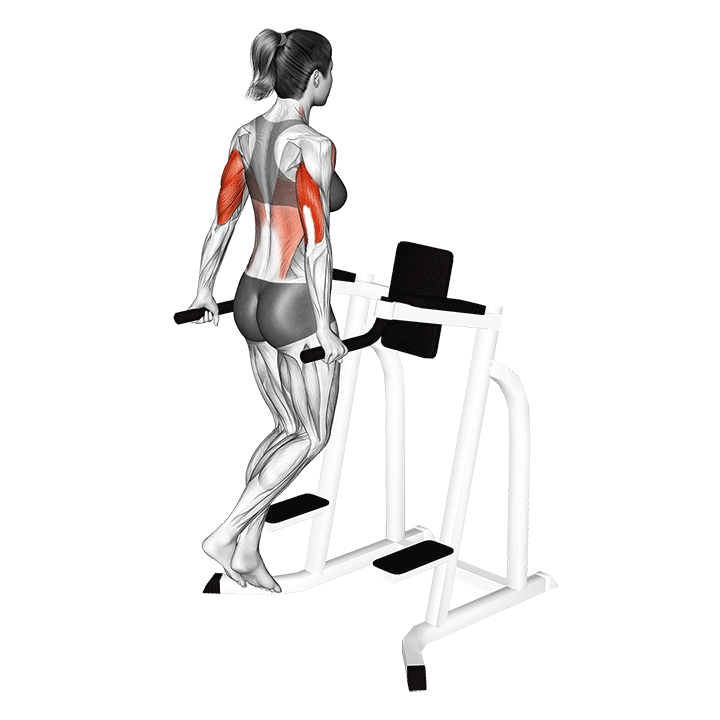What are the Benefits of Doing Assisted Dips?
Apart from simply being a safer and more easily controlled substitute to regular dips, assisted dips also offer the following benefits:
- Effectively Builds the Chest, Shoulders and Triceps
- Acts as Introduction to More Advanced Dip Variations
- Aids with Stabilization, Tempo and Technique
- Carryover to Other Pushing Movements
Benefits of Doing Assisted Dips
Effectively Builds the Chest, Shoulders and Triceps
Like most other variations of dip, the assisted dip is excellent for targeting the pectorals, triceps and anterior deltoids in an intense and highly comprehensive manner.

When performed alongside proper programming and solid recovery methods, development along the lines of both strength and mass is all but guaranteed.
Of course, with steady progression, the assisted dip will eventually become too easy to efficiently induce muscular hypertrophy or strength development. Once assistance is no longer needed to complete a full set, it is important to transition to bodyweight or even weighted dips.
Acts as Introduction to More Advanced Dip Variations
The main purpose of assisted dips (outside of being a secondary compound movement) is to introduce novices to fully unassisted dips. This, of course, is done by simply reducing how much of the body’s weight is lifted with each repetition.

However, apart from allowing for adjustable resistance, the assisted dip machine also provides a larger margin of error with which novices can learn to master proper parallel bar dip technique without risking injury.
If using the exercise for the latter purpose, it is best to pick a significant amount of counter-resistance and to perform repetitions in a slow and focused manner, focusing on ingraining the correct movement pattern.
Aids with Stabilization, Tempo and Technique
Apart from providing upward force to reduce load on the upper body’s muscles, the large padded platform aids with stabilizing the trunk while in an otherwise suspended position - all while also helping control tempo by allowing the lifter to deliberately slow themselves down during the eccentric phase.
Both aspects are vital to proper dip technique, and aid in both a safety and developmental capacity.
Carryover to Other Pushing Movements
Because the assisted dip strengthens the pectoral and triceps muscles, other exercises involving the same muscle groups will also receive an indirect performance carryover.
Pushing movements like the overhead press, bench press or push-up all involve similar biomechanical patterns and make use of much the same muscles, hence the fact that assisted dips indirectly improve the majority of push exercises as well.
Of course, the closer an exercise is in execution to the assisted dip, the more it will benefit. Conventional dips, bench dips and ring dips are the closest cousins to the assisted dip, and are directly strengthened through its performance.
References
1. Haycraft, Jade & Robertson, Samuel. (2014). The effect of concurrent aerobic training and maximal strength, power and swim-specific dry-land training protocols on swimming performance: a review. Journal of Australian Strength and Conditioning.
2. McKenzie, Alec K. BClinSci; Crowley-McHattan, Zachary J. PhD; Meir, Rudi PhD, CSCS; Whitting, John W. PhD; Volschenk, Wynand BA (HMS Hons) Sports Science, CSCS. Glenohumeral Extension and the Dip: Considerations for the Strength and Conditioning Professional. Strength and Conditioning Journal 43(1):p 93-100, February 2021. | DOI: 10.1519/SSC.0000000000000579
